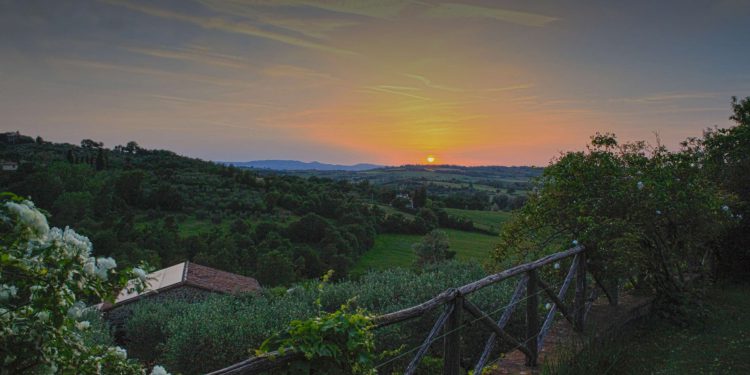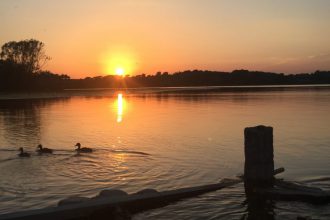Gardens of Umbria

A Visit to Two Iconic Italian Gardens: Villa Lante and Bomarzo (Sacra Bosco). We think they are the best gardens of Umbria.
The gardens of the Villa Lante are located in the Viterbo area, a little south of Umbria in the Lazio region, about one and a half hours by car south of Paciano. Bomarzo is about 20 minutes north of the Villa Lante, on the way back from Villa Lante back to Umbria. A visit to both gardens makes a delightful day trip from Fontanaro.
Renaiassance Italian gardens inspired all subsequent garden design in the Western world, just as Italian art and architecture of the Renaissance provided the foundation for Western art.
The Villa Lante is one of the greatest gardens of the world, a sublime distillation both of the hilly landscapes of Central Italy, and of Renaissance garden practices. The gardens at Bomarzo, though constructed at about the same time, in the 16th century, are a Mannerist extravaganza, completely different in form and tone from the Villa Lante.
The Villa Lante was built as a retreat by Cardinal Gambara, and likely designed by the great architect Jacapo Barozzi da Vignola. A prototypical Renaissance garden, it was built on a hill, open to nature, constructed on a series of terraces, and laced with falling waters. In fact, the Villa Lante has a narrative that is all about how water transforms as it falls through a hilly landscape. Though the terraces climbing the hill at Villa Lante are laid out formally, visitors who follow the flowing, spurting, and pooling water back to its source upstream are treated to a delightful series of vistas.
On entering, the visitor sees two compact casino residences on either side of the garden, straddling the first terrace. The casinos look down onto a large serene parterre garden that contains four pools and a center fountain. The small town of Bagnaia lies just beyond the estate gates.
The Fountain of the Lamps, located along the central axis of the garden, steps us up from the back of the first terrace to the level area of the second terrace, which contains a long narrow table that has water coursing through, which keeps the wine chilled as dinner is served! The sumptuous River Gods Fountain, at the back of the second terrace, provided spectacle and the music of falling water for the guests’ dining pleasure.
The water flowing into the River Gods Fountain flows down from a Catena d’Acqua, or chain of water, that steps to the third terrace. Visitors can step along the chain of water, enjoying the splashing waters that evoke a rushing stream.
The third terrace holds a dark fountain festooned with dolphins. Just beyond, the visitor spies two small rustic garden buildings that echo the placement of the casinos below. And between the garden houses is the Fountain of the Deluge, the end (or beginning) of the garden. The water originates from here in a symbolically wild state, streaming from the rocks, in a dark wooded area.
The journey of the water begins in nature, takes a series of imaginative forms as it flows downhill, until it rests in the domesticated but beautiful control of the parterre gardens.
– Sacra Bosco at Bomarzo, in contrast to Villa Lante, is all about disorder, fear, warning, and mortality. Duke Orsini, who resided in the nearby Pallazo in Bomarzo, is said to have commissioned this garden after the death of his wife, as a kind of memento mori. The landscape, deeply influenced by Mannerist art, is filled with sculptures of oversized monsters, often in the midst of violent acts. Water features are dark and sinister, buildings tilt.
While there are a few plaques with advisory classical poetry alongside landscape features, the intent of the sculptures are now obscure, and there are no good historical records. The park fell into evocative disrepair and ruin, as recorded in photos in the visitor center.
After restoration in the late 20th century, with the sculptures righted and placed along a path, the landscape has become one of bemused astonishment and spectacle to visitors, especially children. Probably not what Duke Orsini intended. However, the popularity of Sacra Bosco has now assured it some sort of eternal life!
Here is the Google Map Route:
GRAZIE RUTH FOR YOUR POST!










